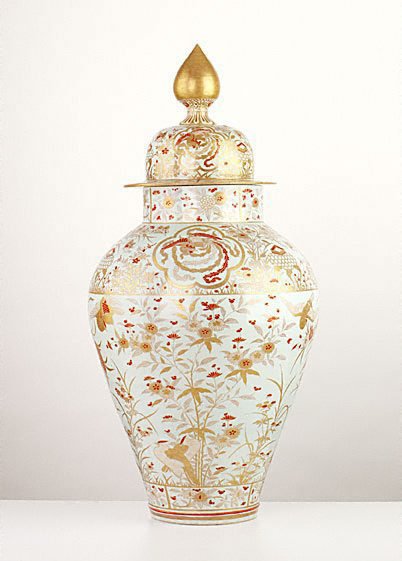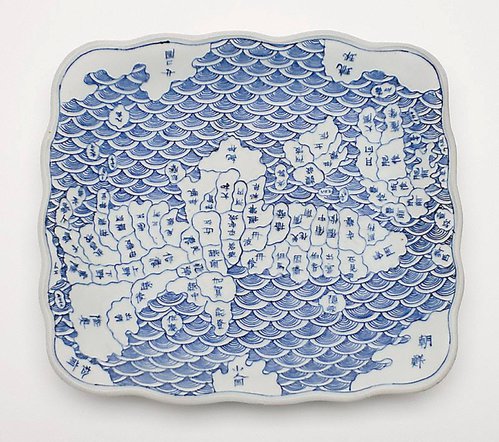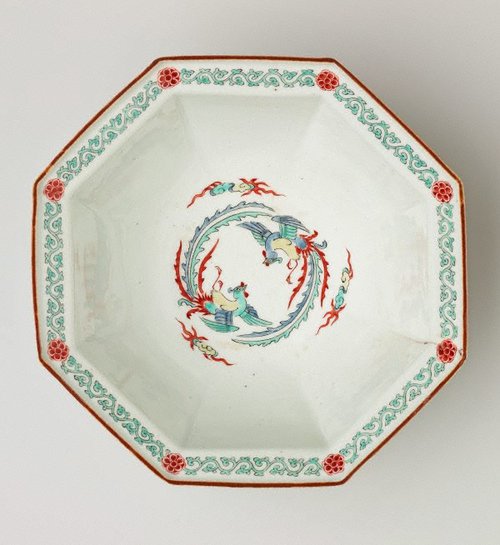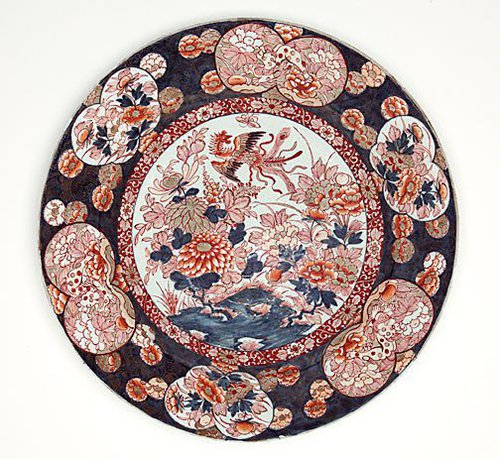-
Details
- Other Titles
- Imari ware kendi
Kendi with design of landscape - Place where the work was made
-
Arita
→
Japan
- Period
- Edo (Tokugawa) period 1615 - 1868 → Japan
- Date
- circa 1660-1685
- Media category
- Ceramic
- Materials used
- porcelain with underglaze blue decoration
- Dimensions
- 8.5 cm diam. of rim; 20.6 x 18.1 cm
- Signature & date
Not signed. Not dated.
- Credit
- Gift of Lesley Pockley 1986
- Location
- South Building, lower level 1, Asian Lantern galleries
- Accession number
- 84.1986
- Copyright
- Artist information
-
Arita ware
Works in the collection
- Share
-
-
About
The 'kendi', a drinking water vessel with a spout but no handle, is a form distinct to Southeast Asia, where it has a long history. The name is thought to derive originally from the Sanskrit word 'kundika' meaning a water vessel, and was an attribute of Hindu and Buddhist deities. Made in China as early as the Yuan dynasty, it was also known as a 'gorgolet' (from the Portuguese 'gorgoletta'). The main markets were Indonesia and Malaysia, and Chinese, Japanese and Thai potteries catered to this market, as well as local potteries. The shape became popular in Europe in the 1600s, as evidenced by its frequent appearance in 17th-century Dutch still life paintings.
The Asian Collections, AGNSW, 2003, pg.138.
Arita ware or Imari ware?
Arita ware (porcelain made around the Arita region) is commonly referred to as 'Imari ware' both in Japan and overseas because porcelain products from the region were transported to domestic and overseas markets through the port of Imari, approximately 15km north of Arita. For the sake of consistency, all porcelain works produced during the Edo period in the Art Gallery of New South Wales collection are catalogued according to the production site, e.g. Arita ware and Hasami ware.
Imari itself was home to the Nabeshima ware, exclusively produced at the Ôkawachi kilns for official use of the ruling Nabeshima clan. With the establishment of the Meiji government in 1868 the independent fiefs of the Edo period were replaced by prefectures in 1871, and the Ôkawachi kilns entered the free market. The term 'Imari ware' (or Ôkawachi ware) now applies to works produced in Imari from 1871 to the present.
-
Places
Where the work was made
Arita
-
Exhibition history
Shown in 1 exhibition
Elemental, Art Gallery of New South Wales, Sydney, 30 Jul 2022–2024
-
Bibliography
Referenced in 1 publication
-
Jackie Menzies (Editor), The Asian Collections Art Gallery of New South Wales, 'Export Ceramics', Sydney, 2003, 138 (colour illus.).
-
-
Provenance
Lesley Pockley, pre 1986, Sydney/New South Wales/Australia, donated to the Art Gallery of New South Wales, Sydney, June 1986.




